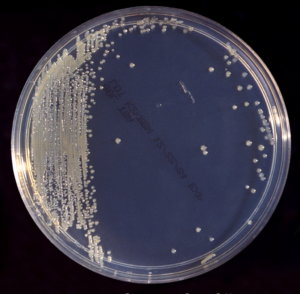September 2023
Emergomycosis – an emerging mycosis
Emergomycosis is a systemic fungal mycosis caused by a novel dimorphic fungi called Emergomyces species. It is mainly seen in immunocompromised patients. The first case of Emergomycosis was identified in 1994 in Italy; however, the fungus was described in 1998. Disseminated Emergomycosis observed a case fatality rate of 48%. These fungi were initially classified as […]
Eikenella corrodens
Bacteria: Pathogenicity: Culture and identification: Infection caused by Eikenella: Points to remember Eikenella corrodens is usually susceptible to: Non-susceptible to:
Diagnosis of vertebral osteomyelitis (VO)
Reference: JBJI review published on 27/1/2022. Read the full paper here – Maamari, J., Tande, A. J., Diehn, F., Tai, D. B. G., and Berbari, E. F.: Diagnosis of vertebral osteomyelitis, J. Bone Joint Infect., 7, 23–32, https://doi.org/10.5194/jbji-7-23-2022, 2022. Biomarkers Imaging Biopsy and Microbiology Serology Novel modalities Flow chart as shown in the above article
Culture media and composition
This is a list of some culture media and their composition. MEDIA SUPPLEMENTS TARGET ORGANISMS ABC plates Alpha-galactosidase Salmonella sp. Alkaline peptone water [pH – 8.6 ± 0.2] NaCl, peptone Enrichment of Vibrio spp. Aztreonam Blood Agar Aztreonam, blood agar base Gram-positive, especially fastidious gram-positive organisms BHI Broths Calf brain and beef heart infusion solids, peptone […]
Cronobacter sakazakii: pathogen from infant formula feed
What is Cronobacter sakazakii? Cronobacter sakazakii is a gram-negative bacteria that can cause necrotising enterocolitis, septicaemia, and meningitis in infants, particularly low-birth-weight neonates. It has repeatedly been associated with reconstituted powdered infant formula. It can also cause infection in adults, especially in vulnerable groups like older people. Infection in infants is associated with a high […]
COVID vaccine
Age-specific recommendations on vaccine type Primary vaccination Based on the JCVI advice, the preference is to use the bivalent mRNA vaccines containing the latest variant (currently BA.4/5), however using a bivalent with a previous variant (such as BA.1) or full dose mRNAvaccine (Pfizer BioNTech 30 micrograms) may be used if there would otherwise be a […]
Corynebacterium macginleyi – an under-reported cause of conjunctivitis
Corynebacterium macginleyi (CM) is lipophilic, slow-growing, gram-positive bacteria first described in 1995 and was named after Kenneth McGinley, who made an essential contribution to the field of lipophilic coryneform bacteria. CM has been associated with conjunctivitis and other eye-related infections. It has also been implicated in various non-ophthalmic infections as an opportunistic pathogen. It has […]
Catalase test
This test detects the catalase enzyme present in most cytochrome-containing aerobic and facultative anaerobic bacteria. The catalase enzyme converts hydrogen peroxide ( H2O2 ) to oxygen and water. This reaction can be observed as the rapid formation of bubbles. The reaction 2 H2O2 → 2 H2O + O2 Catalase positive organisms Gram-positive organisms Staphylococcus, Micrococcus,Aerococcus urinae (Note: Aerococcus […]
Cardiobacterium spp (C hominis, C valvarum)
Bacteria: Microaerophilic, pleomorphic gram-negative bacillus often with swelling of one or both ends and retained crystal violet dye at the poles.It is a part of the normal flora of the nose and throat. Culture and identification: Culture API 20NE – may misidentify it as Pasteurella.MALDI ToF16s rRNA PCR Clinical presentation: Antibiotic susceptibility: Variable susceptibility: Treatment is […]
Capnocytophaga spp.
Capnocytophaga genus belongs to the family Flavobacteriaceae.There are >9 species of Capnocytophaga, which can be divided into two groups – resident of human mouth flora and dog/cat mouth flora. Species found in the human oral cavity C. gingivalis, C. granulosa, C. haemolytica, C. leadbetteri, C. ochracea and C. sputigena Species found in dog/cat oral cavity C. canimorsus and C. cynodegmi Risk factors […]


